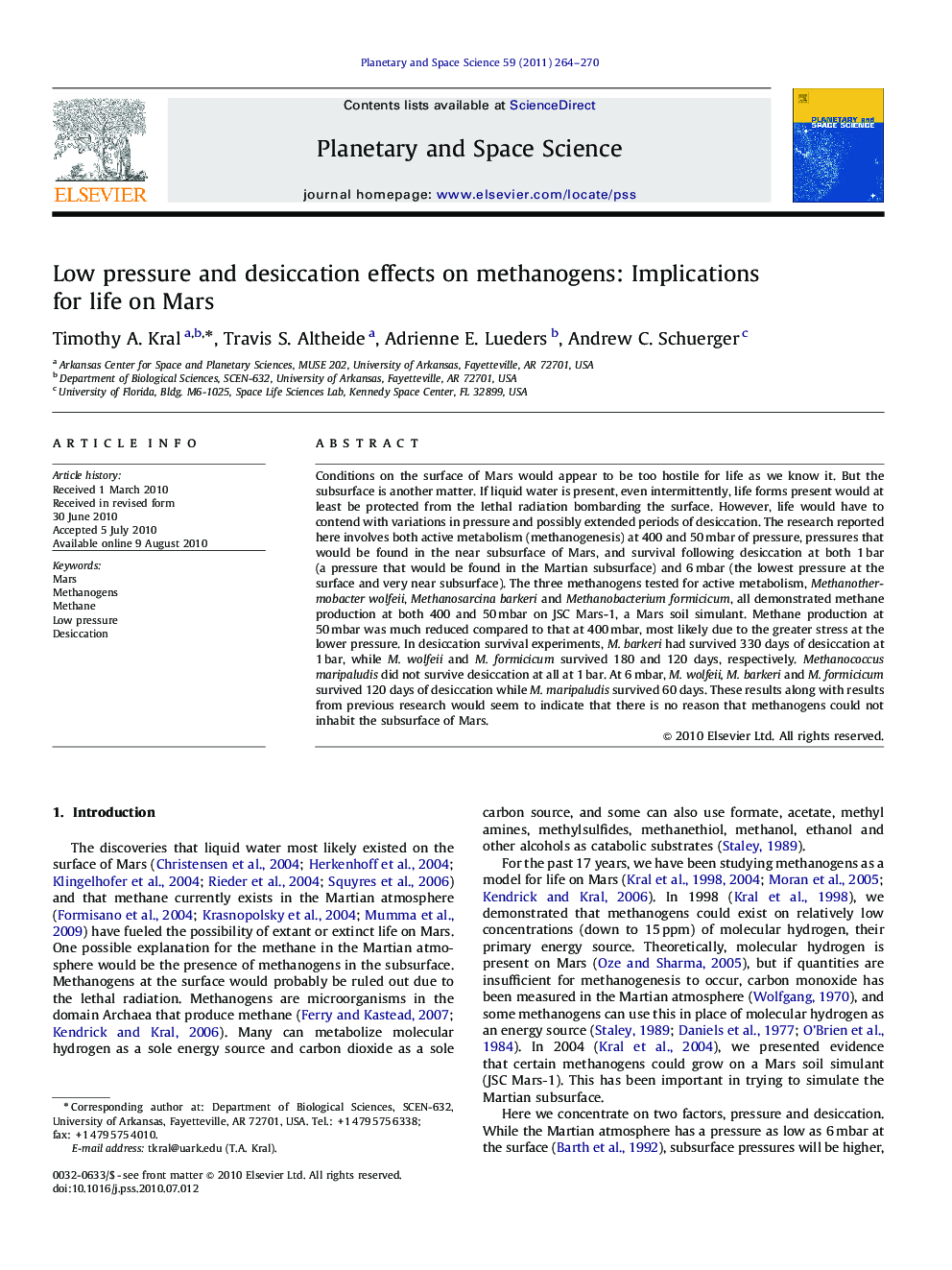| Article ID | Journal | Published Year | Pages | File Type |
|---|---|---|---|---|
| 1781583 | Planetary and Space Science | 2011 | 7 Pages |
Conditions on the surface of Mars would appear to be too hostile for life as we know it. But the subsurface is another matter. If liquid water is present, even intermittently, life forms present would at least be protected from the lethal radiation bombarding the surface. However, life would have to contend with variations in pressure and possibly extended periods of desiccation. The research reported here involves both active metabolism (methanogenesis) at 400 and 50 mbar of pressure, pressures that would be found in the near subsurface of Mars, and survival following desiccation at both 1 bar (a pressure that would be found in the Martian subsurface) and 6 mbar (the lowest pressure at the surface and very near subsurface). The three methanogens tested for active metabolism, Methanothermobacter wolfeii, Methanosarcina barkeri and Methanobacterium formicicum, all demonstrated methane production at both 400 and 50 mbar on JSC Mars-1, a Mars soil simulant. Methane production at 50 mbar was much reduced compared to that at 400 mbar, most likely due to the greater stress at the lower pressure. In desiccation survival experiments, M. barkeri had survived 330 days of desiccation at 1 bar, while M. wolfeii and M. formicicum survived 180 and 120 days, respectively. Methanococcus maripaludis did not survive desiccation at all at 1 bar. At 6 mbar, M. wolfeii, M. barkeri and M. formicicum survived 120 days of desiccation while M. maripaludis survived 60 days. These results along with results from previous research would seem to indicate that there is no reason that methanogens could not inhabit the subsurface of Mars.
